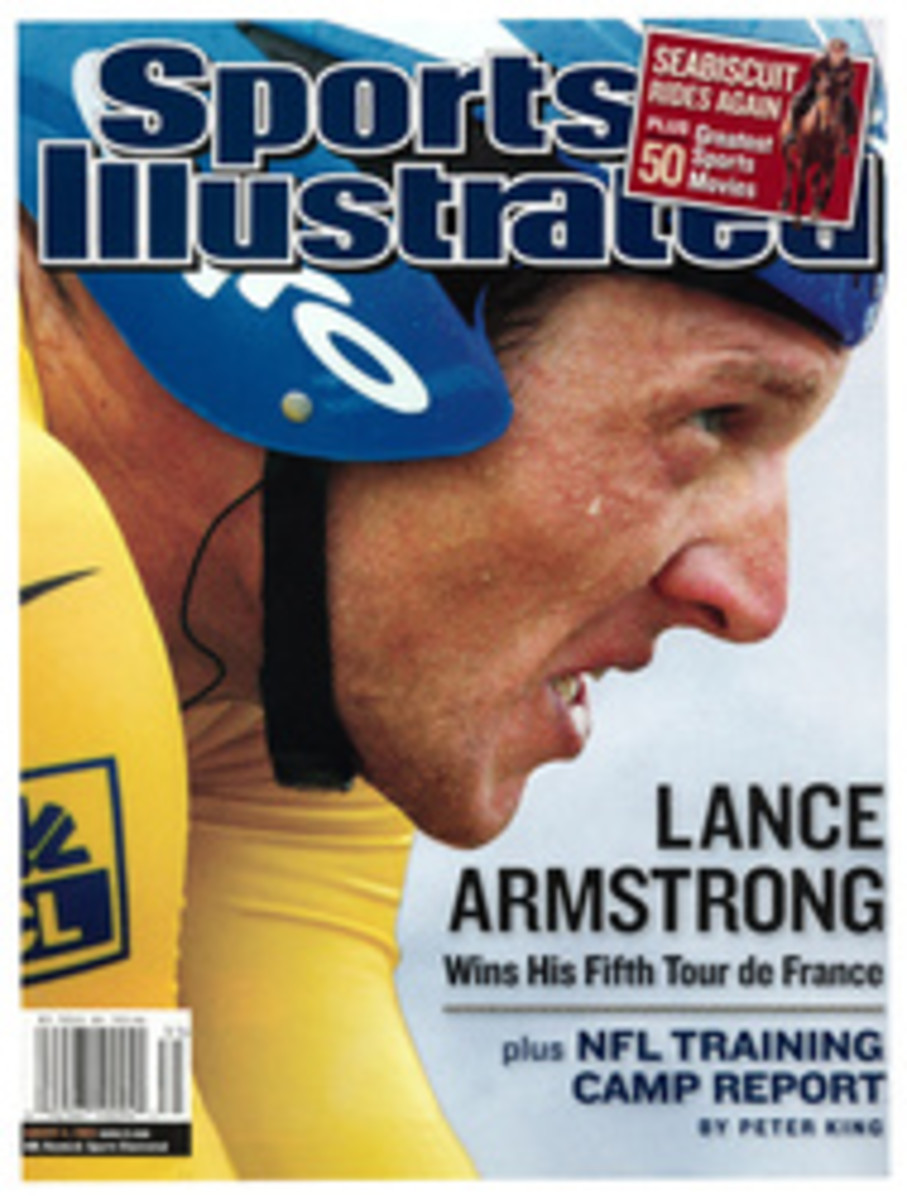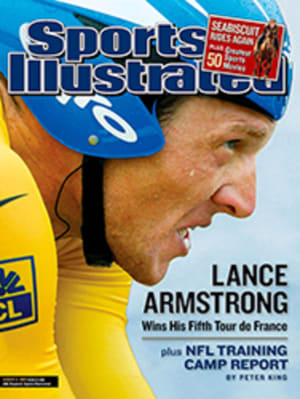
A Golfing Life BOB HOPE 1903-2003
Following Bob Hope's death on Sunday night, at age 100, the nation
mourned the loss of a great entertainer and a great American. In
golf circles Hope will be celebrated as something else: one of
the most important popularizing figures in the game's history. ¶
Hope was more than a progenitor of the pro-am, which he pioneered
with Bing Crosby, his costar in seven road movies. He also had a
hand in many of the other defining moments in the game's
development over the last half century. Alan Shepard's moon
shot? Hope's idea, as he liked to tell it. He had held on to
his driver--Shepard called it Hope's pacifier--throughout the
taping of a TV show at NASA headquarters in 1970, giving the
moon man the inspiration for his lunar six-iron. The
introduction of Tiger Woods? Hope was there, on The Mike
Douglas Show, with two-year-old Eldrick in 1978. And nowhere was
Arnie's Army more mighty than at Hope's tournament in Palm
Springs, Calif., where Palmer won the inaugural event, in 1960,
and four more titles, including his final Tour victory, in 1973.
In many ways golf defined Hope's life. On his first date with
singer Dolores Reade, with whom he celebrated 70 years of
marriage last February, Hope nervously drew golf holes on the
tablecloth and ended up having to pay the restaurant for it.
Golf was the initial basis for Hope's friendship with Der Bingle.
Both were appearing at the Capitol Theatre in New York City in
1932, and between shows they hit balls at a driving range under
the Queensborough Bridge. It was a twosome that would transcend
the game, their 18-hole matches raising money for war bonds and
their star power transforming the gentlemen's game into an
intoxicating elixir of sport and Hollywood.
Even without Crosby, or touring pros, Hope spread the gospel of
golf, for he was a confirmed addict. Whether he was entertaining
the troops, playing with any of the six presidents with whom he
teed it up or hosting a Christmas special, he was usually
clutching a club. Hope would take up to five mulligans per shot
during family outings every Sunday at Lakeside Country Club,
outside Los Angeles. There was so much golf talk in the house
that his four kids learned to play "in self-defense," says Linda,
the oldest child and the vice president of Bob Hope Enterprises
in Burbank. "Dad would come home and say, 'Dolores, I finally got
it. I was out hitting a few with Ben Hogan, and if I just keep my
arm a little straighter, that's the secret.' Well, the next day
he'd be with Sam Snead, and he'd come home and say, 'I know what
it is: It's the left hip. You've got to really turn it.'"
Hope got down to a four handicap in his prime and even played in
the 1951 British Amateur at Royal Porthcawl, losing his first
match. Dolores, too, was a fine player, but she beat him only
once, in Vienna. "Afterward a member came into the clubhouse and
announced, 'Mr. Hope, 79; Mrs. Hope, 78,'" Linda says. "Maybe Dad
was jet-lagged or something."
Chances are he was, considering Hope's exhausting work schedule.
He started out as a vaudeville performer but got his big break in
the film The Big Broadcast of 1938. Over the next 60-plus years,
Hope appeared in more than 75 films and 475 TV programs, while
entertaining troops in four wars and writing 10 books, including
his 1985 golf memoir, Confessions of a Hooker.
Hope gathered some of his best material at the legendary parties
he and Dolores hosted at their Palm Springs home on Friday night
during his eponymous tournament. The crowd was strictly A-list,
300 guests ranging from Sinatra to Snead. The house was a
modernist masterpiece, a domed party palace that sits on the side
of a mountain and features an elevator that descends to indoor
and outdoor pools, a small golf hole with a green and four
bunkers and a huge covered patio that overlooks the Coachella
Valley and was perfect for a large gathering of company.
Hope last teed it up at the Classic in '99, when he hit the
ceremonial first ball with defending champion Fred Couples. In
recent years he spent most of his time at the home where he died,
in Toluca Lake, Calif., in the shadow of Hollywood. He liked to
watch Jeopardy and Wheel of Fortune and could often be found in
his room under an oversized set of headphones, listening to the
crooning of departed friends like Sinatra and Crosby. From the
house he also had a view of the red flag that waves on the
190-yard hole in the backyard.
His remarkable life may have finally ended, but Hope's spirit
will live on. His tournament has raised more than $37 million for
about 40 charities, making it one of the biggest benefactors on
Tour. The main recipient of the money is the Eisenhower Medical
Center, which Hope started with a donation of 80 acres on what is
now Bob Hope Drive. Hope's name will also endure at a home for
the widows of Air Force enlisted men in Fort Walton Beach, Fla.,
to which Hope donated $1 million in January 2003.
As for the Bob Hope Chrysler Classic, "The tournament has a
letter from the Hope family saying that his name will remain for
as long as it supports charity," says tournament director Mike
Milthorpe, which means the Hope name is secure at least until the
end of the current TV contract, through 2006. But that's simply
semantics. "He's always here in spirit even if he isn't here
physically," Corey Pavin, the 1987 and '91 champ, said at this
year's tournament. One of Pavin's favorite perks that came with
the wins was teeing it up with Hope as defending champion. "As
far as I'm concerned, it will always be the Bob Hope tournament
no matter who the sponsor is and even if his name isn't on there
anymore," Pavin says. "Like the Crosby."
Ah, yes, Der Bingle. When Crosby died in '77, Hope remarked that
his old friend was just "a drive and a chip shot from heaven."
Now, finally, they can resume their match.
COLOR PHOTO: ROB BROWN (HOPE) [INSIDE COVER INSET] BOB HOPE 1903-2003 GOLF'S GRAND AMBASSADOR G10
B/W PHOTO: AP STAR POWER Hope played with all the greats, including JackNicklaus in 1968.
B/W PHOTO: HULTON ARCHIVES/GETTY IMAGES CLUB CHAMPION Hope played around with (from left) Crosby in '52, U.S. troops in Thailand in '71 and Perry Como and Palmer in '67.
B/W PHOTO: NBC/GLOBE PHOTOS [See caption above]
B/W PHOTO: BETTMANN/CORBIS [See caption above]

